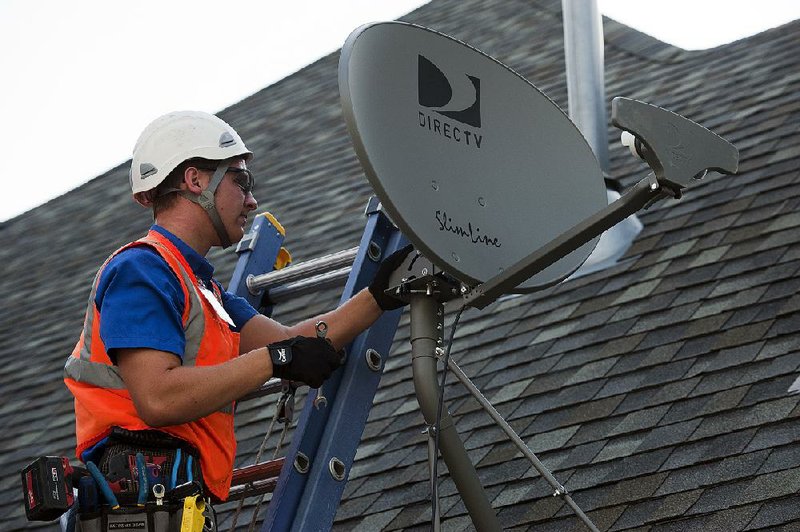DirecTV replaced The Weather Channel with WeatherNation TV on Jan. 13 in a dispute over fees, giving Denver-based WeatherNation a major opportunity.
Overnight, its distribution jumped from 10 million pay TV homes to 30 million.
The move has angered some customers who say WeatherNation is a poor substitute that offers rote seven-day forecasts without the in-depth analysis offeredby The Weather Channel.
Standoffs like the one between The Weather Channel and DirecTV are increasing as TV content producers demand higher fees from the cable and satellite companies that carry their programming. The higher fees, say pay-TV providers, result in ballooning bills for consumers.
What makes The Weather Channel dispute different is that DirecTV is raising a new argument for the smartphone era: Why pay high fees for weather reports when consumers can get all sorts of free forecasts on their mobile devices?
There are more than a dozen weather apps for smartphones. Apple’s Siri voice assistant can even tell users if they need an umbrella. What’s more, say DirecTV officials, when viewers turn on The Weather Channel, they have a 40 percent chance of catching a reality TV program.
Although DirecTV’s ar-guments ring true for tech-savvy consumers, hardcore weather junkies say better information matters.
The newfound attention has introduced a new level of scrutiny to WeatherNation’s weather reports, some of which plays out on Twitter in less-than-polite terms.
Its executives take umbrage at the criticism that its broadcasts often are on tapedelay during severe weather events.
“Let me be real clear: We don’t run on a three-hour loop,” Michael Norton, president of WeatherNation said.If some city forecasts are repeated, it’s because “those models don’t change minute to minute.”
When it comes to severe weather, such as the ice storm that turned Atlanta’s highways into a slick parking lot, WeatherNation sometimes relies on local TV station partners. In Atlanta it turned to WXIA-TV for coverage. Other times, it sends its own crews.
“During Hurricane Sandy,I had seven crews along the East Coast,” Norton said. “I think there’s a misunderstanding of what we provide.”
Paul Douglas, the veteran meteorologist who founded the precursor to WeatherNation TV in 2008, continues to be the channel’s best-known weatherman. He said the company is trying to balance in-depth coverage of the big storms with nationwide forecasts, because “the rest of America sort of feels left out in the cold sometimes.”
“Achieving that balance is tricky but it’s essential and something we take very seriously,” Douglas said.
WeatherNation TV is working with DirecTV to improve its service, and on Monday it enabled a “local button” on subscribers’ remote controls that displays a quick snapshot of the local weather on the TV. A graphic showing weather specific to the ZIP code area will pop up every 10 minutes, starting within a week. And in March, WeatherNation TV will introduce a six-screens-in-one coverage platform for weather events that are potentially life-threatening. Viewers will be able to zoom in on the main WeatherNation feed, local broadcast stations in affected areas, live remotes from meteorologists in the field, radar maps, advisories or live coverage from national networks such as CNN and Fox.
DirecTV’s chief content officer, Dan York, said the new services mean DirecTV is offering “more in-depth local and severe weather coverage than any other TV provider.”
Since the blackout, The Weather Channel has been running an all-out campaign to shame DirecTV into reaching a deal. Late last week, the company took out ads in newspapers including USA Today, the Miami Herald and The Wall Street Journal, accusing DirecTV of breaking promises, dropping channels and at the same time, increasing monthly bills by 3.7 percent.
It claims its protest website, www.keeptheweatherchannel.com, has had 6.4 million visitors and says that more than 283,000 DirecTV customers have pledged to switch providers because of the blackout.
David Kenny, The Weather Channel’s CEO, said DirecTV picked this fight because the channel is a standalone offering that doesn’t have the leverage of companies that own multiple channels such as Disney or Viacom. The channel can’t give in for a number of reasons, including if it acquiesces to DirecTV’s fee-cut demands, it would have to lower rates to its other distribution partners, a prospect that Moody’s Investors Service warned could result in a cut to the channel owner’s credit ratings.
“It’s better for us to weather this storm than to cave to a bully,” Kenny said.
Business, Pages 19 on 02/11/2014
